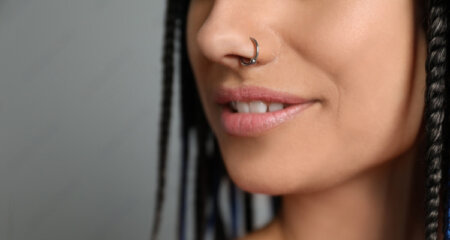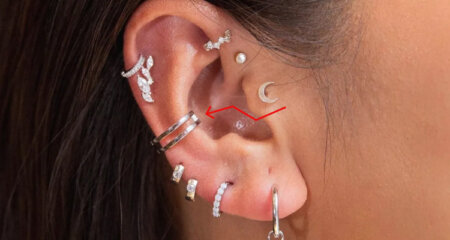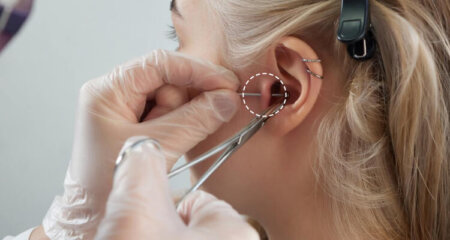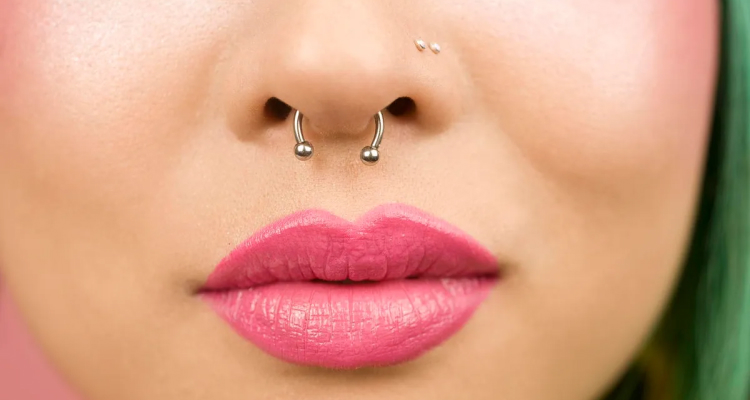
Septum Piercings – Everything You Need To Know
Posted on
Septum piercings have grown increasingly widespread, transcending culture and symbolizing individualism. Piercings on the septum, a small strip of cartilage between the nose, are becoming more common. Septum piercings are fashionable and distinctive.
If you like septum piercings, you must understand them beyond their aesthetic appeal. This reference covers septum piercings’ history, operation, aftercare, and more.
What Is a Septum Piercing?
The septum, a thin layer of cartilage that divides the nostrils, is punctured during a septum piercing. Typically located in the middle of the nose, this piercing may be accessorized with various jewelry pieces, including septum clickers, circular barbells, and captive bead rings.
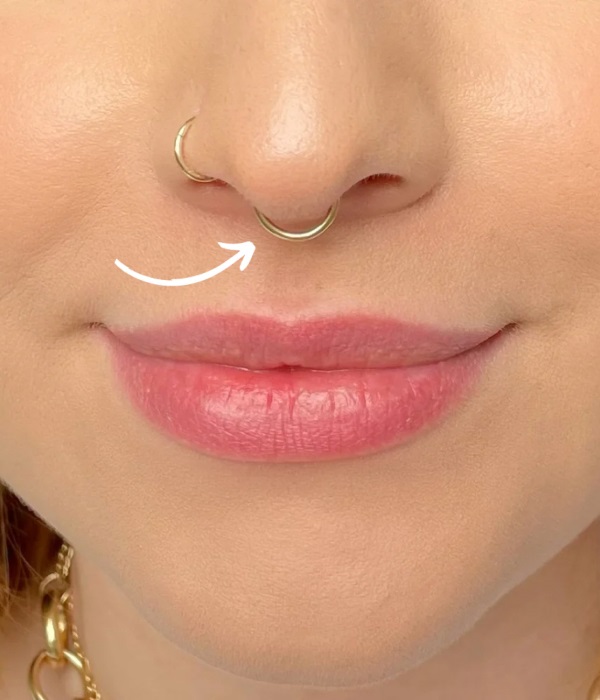
Because of their aesthetic appeal and adaptability, septum piercings have become more popular as a means for people to show their individuality and sense of style. Although septum piercings are historically important in certain cultures, they have become a popular fashion trend that appeals to a wide range of individuals who want to modify their bodies to make a statement.
How painful is a Septum Piercing?
Each person has a different tolerance for pain, and the piercer’s skill level also affects how painful a septum piercing is. Instead of experiencing severe or protracted pain, most clients describe the feeling as a quick, acute squeeze.
Compared to other body piercings, the actual piercing, which involves puncturing the thin tissue within the nose, usually causes very little pain. Adrenaline and endorphins are two other factors that might lessen the feeling. Although some people find the little discomfort during the process to be bearable, the joy of getting a piercing often surpasses any transient pain.
What is the healing time for a Septum Piercing?
Individual healing durations may vary, but most septum piercings heal completely in 4 to 6 months. As the body attempts to heal the punctured region, it’s normal to feel some soreness, swelling, and discharge in the early stages. Promoting healing and lowering the risk of infection need proper aftercare, which includes routine washing with saline solution and preventing stress to the piercing site.
Even though the piercing may show no apparent symptoms of healing after a few weeks, it is important to follow aftercare instructions until the piercing heals completely on the inside, which may take many months.
What aftercare is needed for a Septum Piercing?
In order for a septum piercing to heal properly, aftercare is essential. Careful aftercare is considerably better than dealing with any infections or consequences, even though it may seem routine. Reputable piercers say it’s critical to keep things clean. Use sterilized non-woven gauze and sterile saline solution to gently wipe the region and get rid of any accumulated crust or debris.
Until the piercing has healed completely, gently clean the jewelry once or twice a day, being careful not to twist or rotate the ring. You can reduce the chance of infection and encourage the best possible recovery for your septum piercing by following these aftercare instructions.
What to Avoid After Getting Pierced?
To help with the healing process after a piercing, it’s crucial to modify your skincare regimen and stay away from certain items.
- Use as little soap or moisturizer as possible around the region that is pierced.
- In addition, avoid bathing in hot tubs or bathtubs since they may contain germs that might cause an illness.
- Think carefully about when to have your piercing if you often get colds or seasonal allergies since these illnesses might slow the healing process. Although blowing your nose is typically OK, those who have severe allergies or are more likely to have sinus infections may want to think again before obtaining a nose piercing.
Potential Side Effects
It’s important to be informed of any possible adverse effects that can occur throughout the healing process after a septum piercing. The possibility of infection, which manifests as pus, swelling, or worsening pain, is one major worry. Furthermore, some people who wear septum rings may detect an odd smell, which might be an infection or metal sensitivity.
The surroundings and jewelry around the nose may cause granulation tissue, which is often confused with scar tissue, to grow at the piercing site. There is also a chance of scarring. A good healing journey may be encouraged and these possible side effects can be reduced with regular monitoring and appropriate aftercare.
How to Change Out a Septum Piercing
Patience is essential when it comes to adjusting your septum piercing. The jewelry may be taken off, but it’s best to wait a year or more before trying to replace it. To guarantee correct technique and reduce the chance of difficulties, think about visiting your piercer before making the first jewelry switch.
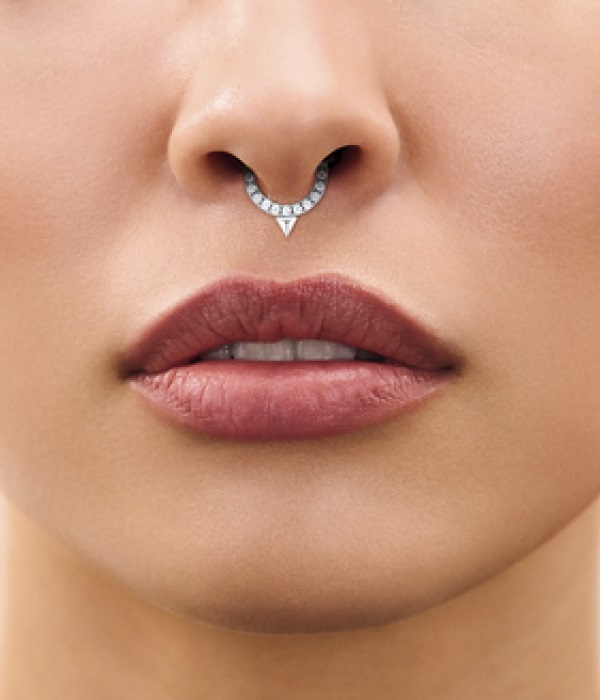
The adaptability of a septum piercing is one of its advantages; if you have a circular barbell, you may wear it covertly simply turning the ring around. But be aware that when flipped, jewelry size and ball ends may interfere with nasal airflow. Retainers for the septum provide an option, however when they are visible, they could not look very nice. Recall that wearing jewelry consistently is essential to preventing closure, particularly while the body is recovering.
Cost
Generally speaking, a septum piercing costs between $40 and $100. However, prices may differ based on the piercing studio’s location and policies. As with any cosmetic procedure, it’s important to budget for your septum piercing after researching reliable providers and taking into account aspects like experience and hygienic standards.
What Jewelry Material Should You Pick?
Choose jewelry made of materials such as titanium, niobium, and stainless steel for your septum piercing. Because it is hypoallergenic, stainless steel is a great option for those with sensitive skin. Titanium has comparable advantages, but it costs more. It is more durable and has a lesser chance of responses.
Niobium is a good choice for those who are very sensitive. This component is reasonably priced and has a little chance of generating reactions. In the end, give top priority to materials that fit your skin type, your budget, and body piercing safety regulations.
What Type of Jewelry Is Used?
There are two main kinds of jewelry that are often used in septum piercings:
1. Septum clicker
These hoops include a hinged closure with a clicking mechanism that makes insertion and removal simple. Closed hoops provide a lot of room for personalization and customization since they often include a variety of beautiful stones and components around the outside edge.
2. Barbell
The tight fit of circular barbell jewelry makes the simple “flip-up” method of hiding a septum piercing without taking off the jewelry possible. This kind of jewelry’s adaptability and secrecy make it a popular option for those who like getting septum piercings.
To sum up, exploring the world of septum piercings reveals a voyage full of thoughtful deliberation, history, and self-expression. This thorough guide has given both aficionados and beginners alike a road map, from comprehending the anatomy of the septum to choosing the appropriate jewelry materials and designs.
With a focus on appropriate aftercare, knowledge of possible adverse effects, and guidance on modifying jewelry and lifestyle choices, people may safely and sensibly have their septum piercings. In the end, septum piercings represent more than simply a style statement; they are an artistic form of self-expression and a mark of personal strength in a society that values individualism above all else.

